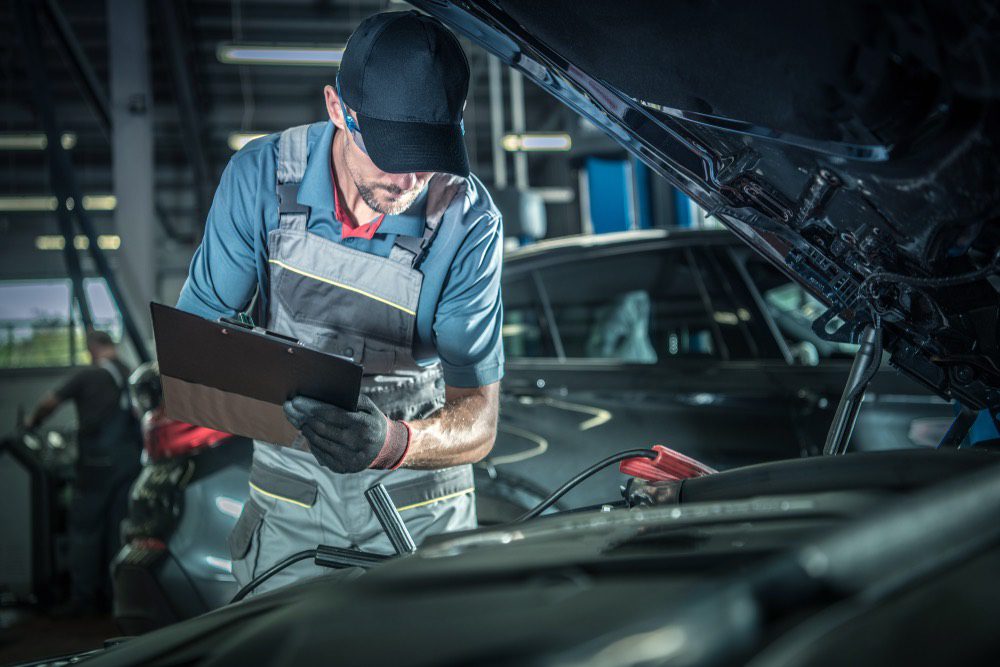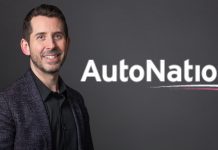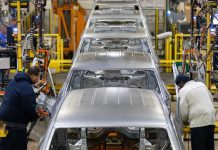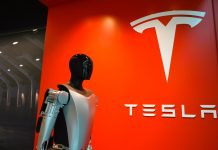Automotive News published an article a while back with the headline “Dealers, get ready for absorption rates that drop to as low as 25%” The report attempts to give auto dealers a glimpse into the future by showing what service might look like in the late 2020s. While an interesting read, I take issues with this type of “sky is falling” approach to the future of the automotive industry. The general premise is that electric vehicles and other factors will have a fundamentally negative impact on the business. So much so that dealers could see their businesses decimated, with service absorption dropping to an unsustainable level. While no one can argue these things will have an impact on our business, I think to paint it with such a negative brush is dangerous and incorrect.
Will electric cars change the business? Yes. But will it be all negative? I don’t believe so. To believe that it will, you would need to believe that replacing an internal combustion engine with an electric motor will fundamentally change a dealer’s work mix in service. Electric-powered vehicles will still need rubber tires, brakes, wiper blades, and other wear items.
While braking systems will change with electric vehicles, there is no indication that friction brakes will disappear. These vehicles will also have power windows and locks, air conditioning, and even more complicated ADA systems than we have today. All of these things will likely need some level of repair at some point.
In reality, the only thing that will fundamentally change is the power plant. I asked a Service Manager friend how much actual engine work he does these days, and his answer was “little.” So, what is really changing that will impact dealers’ service work? In terms of the amount of work, I believe not much. What this article failed to point out was the massive opportunity dealers will have as a result of historically not putting enough emphasis on the wear items I reference.
The answer to what lies ahead comes from understanding what has happened in the past. Over the last 20 years, dealerships have seen their work mix change in more significant ways than electric vehicles will introduce. The continued decline of major repair work and some scheduled maintenance resulting from higher vehicle quality will have a much greater impact on dealers’ service business than EVs, and the solution has been right in front of dealers for decades. After 20 years of “trying,” dealers still don’t sell tires well. And even with all of the data that supports the positive impact, they will have on the business, I meet dealers every day who still won’t embrace this because they are low margin. Unfortunately, this shortsighted view will be the end of many dealers, regardless of how many EVs are on the road.
Another point the article addresses is the need for higher-skilled, computer-savvy technicians in the future. I believe this is true to a point. What will come along with hi-tech battery-powered cars will be further development of self diagnosing and self-repairing automobiles. The future for many repairs will be software updates that in many cases won’t require a technician at all. With regards to technicians, a bigger concern that the article doesn’t address is the need for lower-skilled, lower-paid techs that will do things like tires and other wear-item work. And like the selling of the wear item, this is a NOW problem, not a future (EV) problem. Often when it comes to tires and other wear items, dealers have a cost-of-labor problem. This is one of the driving factors behind dealers claiming they can’t make money on tires. Dealers need the technicians at a pay level that allows them to be more competitive with these price-sensitive service items.
$75 billion! That is the size of the aftermarket service repair industry in the U.S. This is money being spent on vehicles, but not at dealers. And ALL of the vehicles when new, were sold by a dealer. So, this represents customers and work the dealers had and lost. The question I would ask the author of this article is how much of this work do dealers need to win back to offset any impact EVs and other factors will have. The answer is not much.
The reality is if dealers just kept a small portion of the work that defects, they would have more work than they can handle, forever! The largest single opportunity dealers have is with tires. Dealers currently have less than 10% market share of replacement tires. And recent evidence points to tires being a major cause of customer defection. So, not only are dealers losing the tire sale, but they are also losing all of the other future service work. Consumer Reports calculates this to be as much as $2,000 annually as the vehicle ages. And if this is not enough, early data from EVs shows that they need tire replacement at a much higher rate than an ICE vehicle. All of this points to tires needing to be a major part of a dealer’s parts and service business now and especially when EVs become more commonplace.
And if you still need to be convinced that tires need to become a great portion of a dealer’s business, let’s look at the opportunity with alignments. Alignments are one of the few wear-item services that come with great profit. And like tires, dealers often do very poorly. Data shows that most dealers capture less than 11% of their true alignment opportunity, leaving tens of thousands of dollars a month on the table.
In summary, EVs will create change and challenges, but that’s not news to anyone who has been around this industry for a while. Will we see 25% service absorption as this article suggests? Maybe, if dealers don’t embrace this area of the business. The good news is, as I said, this is a “now” problem. Dealers need to start getting better at this now because the opportunity is there. And when EVs do become a significant part of dealers’ service business, it will be business as usual.
Did you enjoy this article from David Boyle? Read other articles on CBT News here. Please share your thoughts, comments, or questions regarding this topic by submitting a letter to the editor here, or connect with us at newsroom@cbtnews.com.
Be sure to follow us on Facebook and Twitter to stay up to date or catch up on all of our podcasts on demand.
While you’re here, don’t forget to subscribe to our email newsletter for all the latest auto industry news from CBT News.










